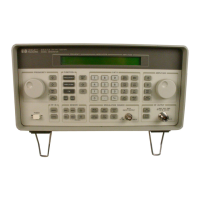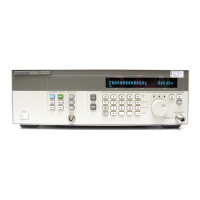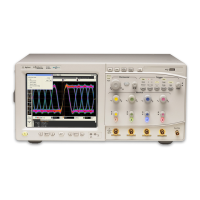3-2
Common Commands
Common Commands
Common commands are defined by the IEEE 488.2 standard. They control generic device
functions that are common to many different types of instruments. Common commands can
be received and processed by the analyzer, whether they are sent over the GPIB as separate
program messages or within other program messages.
Receiving
Common
Commands
Common commands can be received and processed by the analyzer, whether they are sent
over the GPIB as separate program messages or within other program messages. If a sub-
system is currently selected and a common command is received by the analyzer, the ana-
lyzer remains in the selected subsystem. For example, if the program message
"ACQUIRE:AVERAGE ON;*CLS;COUNT 1024"
is received by the analyzer, the analyzer enables averaging, clears the status information,
then sets the number of averages without leaving the selected subsystem.
Status Registers The following two status registers used by common commands have an enable (mask) regis-
ter. By setting bits in the enable register, the status information can be selected for use. Refer
to “Status Reporting” on page 1-11 for a complete discussion of status.
Command
Synchronization
Three commands are available for the synchronization between remote command scripts and
the instrument: *OPC (command and query) and *WAI. The *OPC command sets a bit in the
Standard Event Status Register when all pending device operations have finished. It is useful
to verify the completion of commands that could take a variable amount of time or commands
executed in parallel with other commands, such as PRINt, and the limit test commands
(ACQuire:RUNtil, MTEST:RUNtil, and LTEST). It does not stop the execution of the remote
script. The *OPC query allows synchronization between the computer and the instrument by
using the message available (MAV) bit in the Status Byte, or by reading the output queue.
Unlike the *OPC command, the *OPC query does not affect the OPC event bit in the Stan-
dard Event Status Register. The execution of the remote script is halted and therefore the
*OPC query should be used judiciously. For example, the command “:MTEST:RUNtil FSAM-
PLES,100’; *OPC?” will lock the remote interface until 100 failed samples are detected, which
could take a very long time. Under these circumstances, the user must send a device clear or
power down to re-start the instrument. The *WAI command is similar to the *OPC? query as
Table 3-1. Status Registers
Status Register Enable Register
Event Status Register Event Status Enable Register
Status Byte Register Service Request Enable Register

